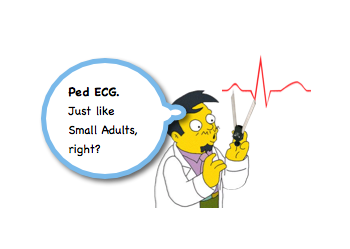Revision Resources
Recent Posts View All
August 2019 FOAMed
What is palliative emergency medicine?

The skilled and rapid resuscitation of critically ill patients is a central premise in the specialty of emergency medicine (EM). A paradox for providers often arises when in the midst of resuscitating a patient with advanced chronic illness, the question of risks versus benefits arises. For this patient, we may successfully stabilize vital signs, but at what cost? Will this patient return to a quality of life they deem acceptable? What are the patient’s goals of treatments given his/her underlying disease? These questions illustrate the need for emergency physicians to be more aware of and comfortable with palliative care practices.
Low Risk Chest Pain and Troponin

Talk to any emergency doctor worth their salt, and they’ll tell you that it isn’t the wildly sick patients who keep them up at night – it’s the ones they sent home. Every disease has high risk and low risk populations, and every patient has diseases they are individually more or less likely to have. It’s a battle of odds, and the stakes couldn’t be higher. So fittingly, chest pain is a high risk topic, but has low risk patients that we need to identify accurately in the ED. In this podcast with Dr. Eddy Lang and world expert on troponin researcher Dr. Andrew McRae, we answer the not-so-simple questions: In the age of high sensitivity troponins and the HEART pathway, which low risk chest pain patients are safe to discharge home from the ED? What are the most useful historical factors to increase and decrease your pretest probability for ACS? Which cardiac risk factors have predictive value for ACS?
Paediatric ECG

Electrocardiograms are fun to look at: like abstract art that hangs in a fancy museum, their beauty is often in the eye of the beholder. That being said, they are a vital tool to interpret. There are several situations when the Pediatric ECGis an integral part of the evaluation (ex, Syncope / Hair grooming syncope, Submersions, Seizures – not all that seizes is a seizure, BRUE, Breath Holding Spells, Pericarditis, ALCAPA, and Chest Pain). Unquestionable, ECGs are more commonly encountered when evaluating adult patients, but the infrequent encounters with the Pediatric ECG may make us less comfortable with them. Let us take a minute to consume a morsel of the Pediatric ECG…
Rash After a Sore Throat and NSAIDs

The patient is an 18 year-old male who presents with a rash that appeared 7 days ago. The rash is located on his torso, back, and lower lip. It is pruritic. Three days prior to the appearance of the rash, he had a sore throat and intermittently took ibuprofen over the ensuing 3 days. He stopped taking ibuprofen 4 days after his sore throat abated. He denies any fever, nausea, vomiting, shortness of breath, chest pain, abdominal pain, diarrhea, extended travel in the past year, sick contacts, new soaps/detergents, insect bites, chemical exposure, and new foods.
Lightning Learning: Rubella

Fortunately, the rates of Rubella in the UK have remained low with only 3 cases in 2018. In 2018 the World Health Organisation (WHO) reported 14,612 cases in total – worldwide. Currently, up until June 2019 there have been 27,040 cases, nearly 50% more than the whole of 2018.
Are you sure you wish to end this session?

